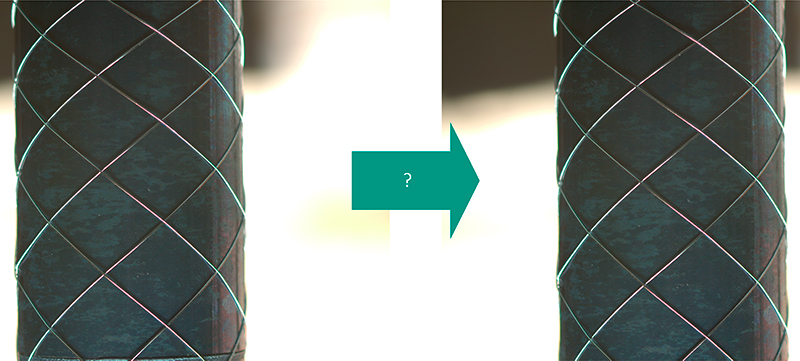Image-based measurement of the mandrel’s movement speed in the context of an automated stent production
- Subject:Image processing, machine vision, machine learning
- Type:Masterarbeit
- Date:ab 08 / 2024
- Tutor:
Image-based measurement of the mandrel’s movement speed in the context of an automated stent production
Context
Coronary heart disease (CHD), which includes myocardial infarction, is currently the most common cause of death in Germany. They can be treated by implanting a cardiovascular implant ("stent") into the affected vessel. These stents are therefore medical devices that have to meet corresponding quality criteria. At the same time, personalization, i.e. the production of a stent adapted to the patient, is the exception. If such personalization takes place, the affected vessel is measured using imaging (e.g. CT and MRI) and a stent is simulatively designed for it. The stent is then produced, e.g. by braiding. The designed stent geometry must be adhered to as precisely as possible, as (in the worst case) one or more thromboses or ruptures of the vessel may occur. For this reason, ITIV is developing a visual inspection system that monitors the geometry of a stent during its production so that intervention is possible in the event of an error. As part of this system, images of the manufactured stent are taken using a camera, then the image is cropped and the stent is measured. In order for the results of several measurements to be correctly combined, the movement of the stent between two consecutive images must be known. Currently, the target specification of the braiding machine is used to describe the movement. However, this is a value that is approximated on the basis of acceleration, for example.
Goals
The goal of the thesis is therefore the image-based calculation of the speed and direction of movement of the stent (and thus the mandrel) between two consecutive measurements.
Requirements
- Business fluent in written and spoken English
- Structured and analytical approach
- Programming experience in Python
- Optional: knowledge of image processing
- Optional: Knowledge in the field of machine vision
- Optional: Knowledge in the field of machine learning


